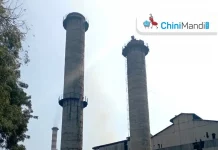New Delhi [India], March 14 (ANI/SRV): Indian Rice suppliers had a successful introduction meeting with the Minister of Foreign Trade and Economy of the Republic of Cuba H.E. Rodrigo Malmeirca Diaz and his delegation that is visiting India. The rice samples were presented to the delegation by Balaji Agro Oils Limited in Andhra Pradesh. MOU was signed between Balaji Agro Oils Limited represented by Vallabhaneni Suraj Kumar and the Latin American Caribbean Trade Council represented by its president Dr Asif Iqbal for supply of 3 lakh metric tonnes of rice and other commodities to Cuba and neighbouring LAC countries. The MOU was signed in the august presence of the Minister of Foreign Trade and Economy, Deputy Minister of Foreign Trade Deborah Rivas Saavedra and Ambassador of Cuba to India Alejandro Simancas Marin and other Cuban delegation.
India, the world’s biggest rice exporter, mainly exports top-grade basmati rice to the Middle East and non-basmati rice to African and Asian countries. The country has put restrictions on exports of non-basmati rice to calm local prices. But, on the other hand, overall rice export has seen a big jump. India is the world’s biggest rice exporter. It exports non-Basmati rice to African countries and Basmati to the Middle East. According to a report, India’s total rice exports saw a jump of nearly 46 per cent in 2021 from a year ago to a record 21.42 million tonnes. The jump came as Bangladesh, China and Vietnam increased purchases.
India’s rice exports by end 2022 jumped to a record high despite the government’s curbs on overseas sale, as buyers continued to make purchases from the South Asian country because of competitive prices, according to government and industry officials. Indian rice is the cheapest and that’s why exports would remain strong in 2023,
The record exports allowed Asian and African countries to import the staple at a time when supplies of wheat and other grains were hit by drought and Russia’s invasion of Ukraine. India’s rice exports in 2022 rose 3.5 per cent from a year ago to 22.26 million tonnes, or more than the combined exports of the next four largest exporters Thailand, Vietnam, Pakistan and United States, said Mr. Ramakrishna Reddy, Chairman of the India African Union Trade Council that is also exploring to supply rice to various countries in Africa.
Export-Import Bank of India (Exim Bank) has entered into an agreement dated June 23, 2022 with the Banco Exterior de Cuba- an agency nominated by the Government of Republic of Cuba for making available to the latter, Short Term Line of Credit (STLoC) of EUR 100 million (Euro One Hundred Million Only) for the purpose of financing procurement of rice from India to the Republic of Cuba. The export of eligible goods including plant, machinery and equipment, and services including consultancy services for the purpose of procurement of rice to be exported from India, as defined under the agreement, would be allowed subject to their eligibility under the Foreign Trade Policy of the Government of India and whose purchase may be agreed to be financed by the Exim Bank under this agreement. Out of the total credit by Exim Bank under the agreement, goods and services of the value of at least 75 per cent of the contract price shall be supplied by the seller from India, and the remaining 25 per cent of goods and services may be procured by the seller for the purpose of the eligible contract from outside India.
Latin American Caribbean Trade Council is the main body that sets benchmarks for exports of rice from India and which works with various trade ministries and buying agencies in Latin America, in collaboration with local India state governments as well as concerned stakeholders, have been promoting and boosting rice exports. LACTC has been promoting rice exports through collaborations with various stakeholders in the value chains. LACTC has representatives from rice industry, exporters, Suppliers of Agriculture products from major rice producing states including West Bengal, Uttar Pradesh, Punjab, Haryana, Telangana, Andhra Pradesh, Assam, Chhattisgarh and Odisha.
As part of the initiatives, LACTC in collaboration with the rice exporters associations of Punjab, Haryana, Uttar Pradesh, Uttarakhand, Himachal Pradesh, Jammu & Kashmir and Delhi, state agriculture universities and state agriculture departments, also plans to make aware of the opportunities for supply of rice and other commodities to encourage farmers for growing high-quality rice and millets in the seven states.
Through the awareness creation programme, farmers will be informed that the millets and rice cultivation is an Indian tradition and it is a collective responsibility to maintain this tradition as there is huge demand for indian rice in the global market.
The sharp spike in rice exports especially during a phase where globally the COVID-19 pandemic has disrupted supply chain of many commodities, has been attributed to the government taking prompt measures to ensure exports of rice and other cereals while taking all COVID-19-related safety precautions. “India continues to supply rice to the global market thus ensuring food security in many countries while many countries are stockpiling in anticipation of logistical disruption because of the COVID-19 pandemic,” said P . Veera Raja, Trade Commissioner of the Latin American Caribbean Trade Council.
India accounts for approximately 40 per cent of global rice shipments, exporting to more than 150 countries. India’s exports of premium basmati rice are likely to jump 15% over last year as key buyers in the Middle East build their inventories despite prices jumping by nearly a quarter. Higher basmati exports would keep local prices firm, helping Indian farmers earn more by pushing paddy prices up to a record high.
“After the Ukraine war, buyers are afraid of a sudden supply disruption. Every buyer is trying to have enough stocks,” said Wali Kashvi, Vice President of the Indian Economic Trade Organization.
India could export more than 4.5 million tonnes in the 2022/23 financial year started on April 1, up 15 per cent from a year ago, he said. Trade ministry data showed that exports rose 11 per cent to 2.16 million tonnes in the first half of 2022/23. A sharp drop in freight charges from this year’s peak was also prompting importers to buy more, Kashvi added.
The country has exported 17,262,235.10 MT of Non-Basmati Rice to the world for the worth of Rs. 45,652.36 Crores/ 6,124.27 USD Millions during the year 2021-22. Major Export Destinations (2021-22): have been Bangladesh, Benin, China, Nepal, Cote D Ivoire, Senegal and Togo. Now Latin American countries will be added to the list of Cuba rice importing from India.
For more information, visit -www.ieto.online/cuba
This story has been provided by SRV. ANI will not be responsible in any way for the content of this article. (ANI/SRV)
















